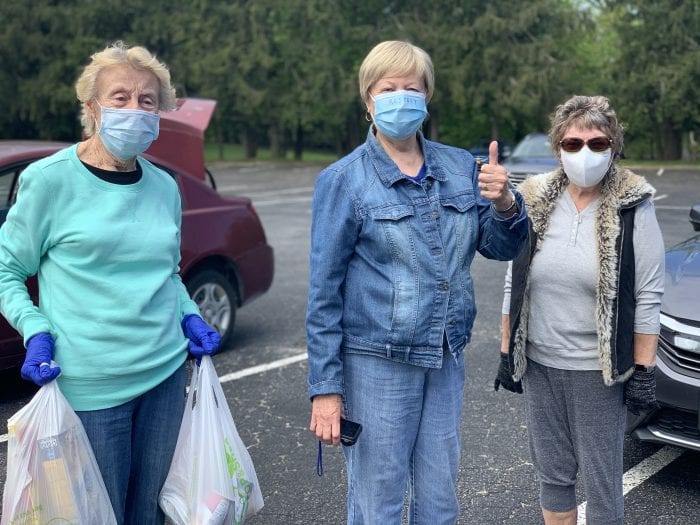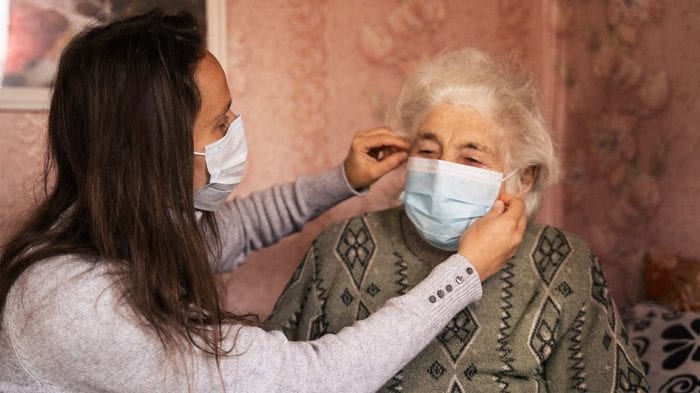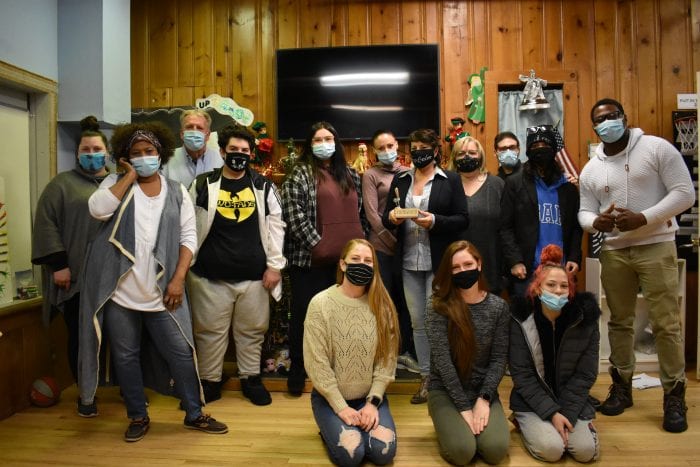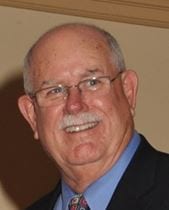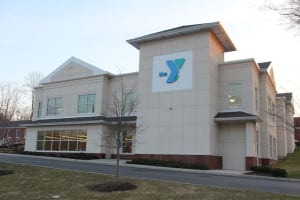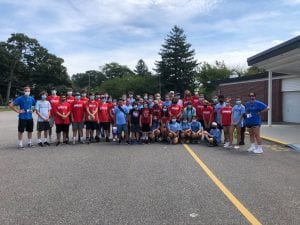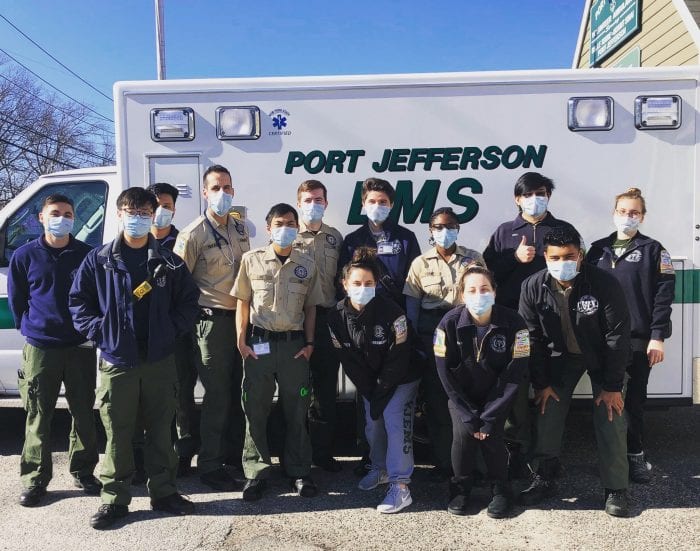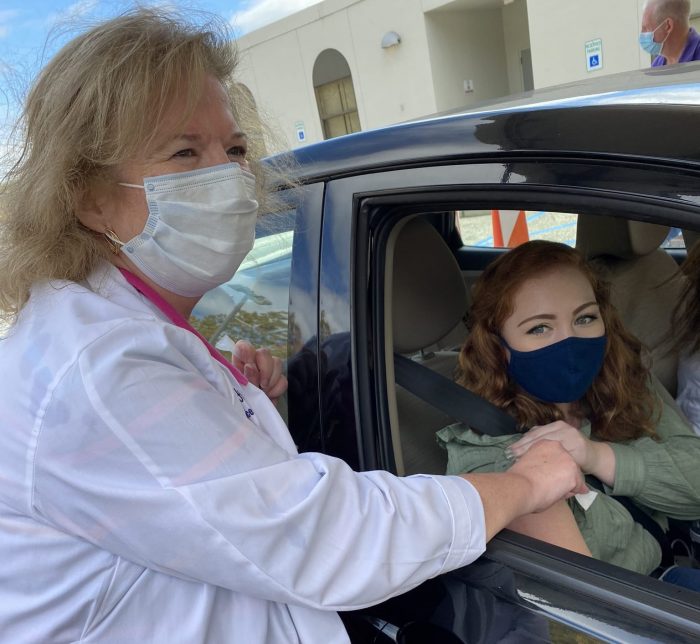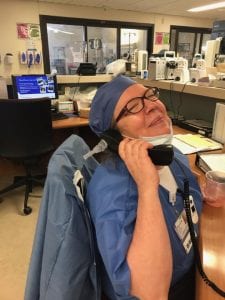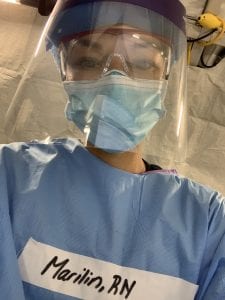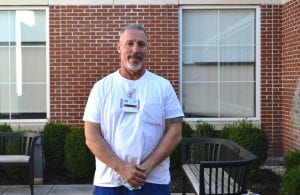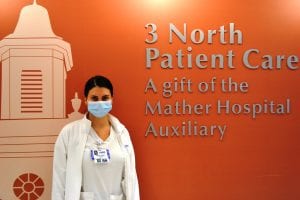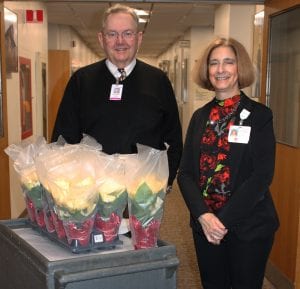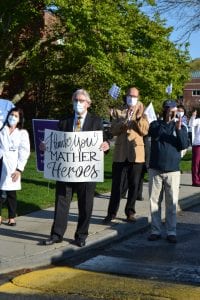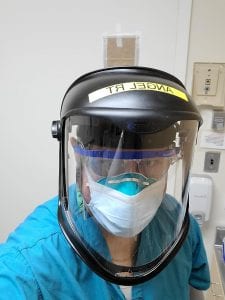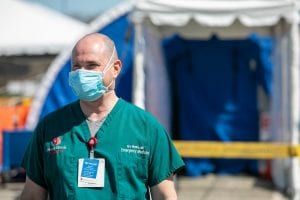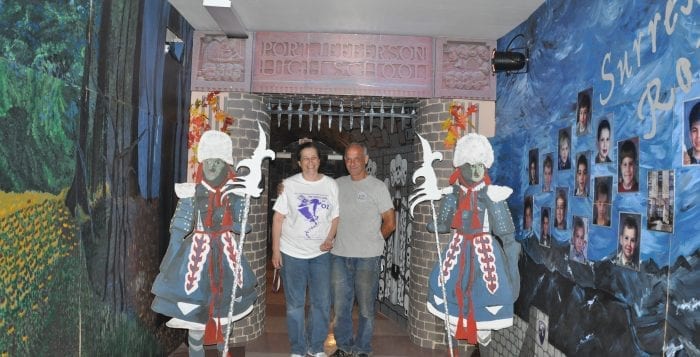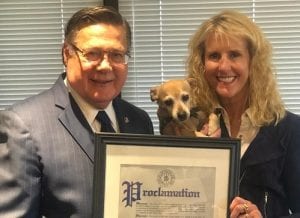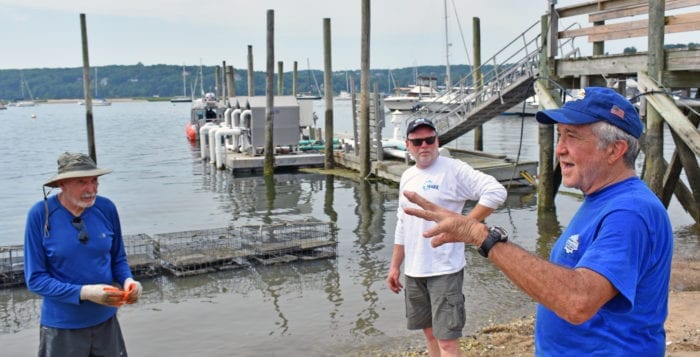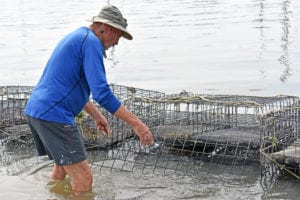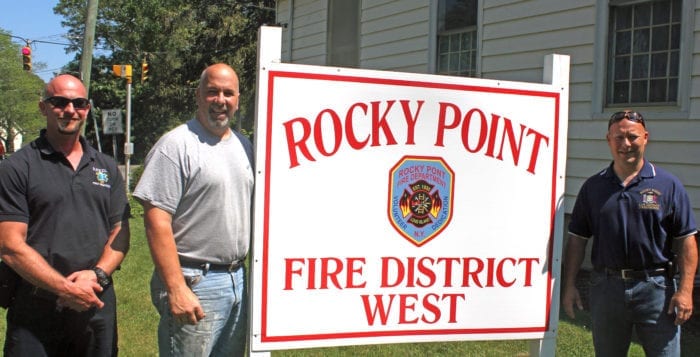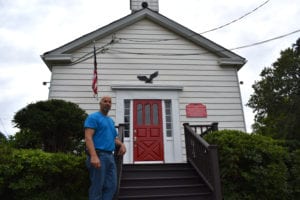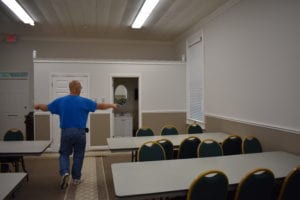Throughout the COVID-19 pandemic, everyday people felt that it was their civic duties to step up and make a difference. Some made masks, some drove around supplies, others gathered food for those who were hungry.
Many of these people had jobs, families and their own struggles at home, but they knew they wanted to be a part of something bigger. They chose early on what side of history they were going to be on, the side that helped others and made a difference.
“The sacrifice everyone made was apparent,” Carmela Newman with Operation Headband, said. “I grew tenfold from working with such amazing people.”
Operation Headband started out when Newman’s friends at local hospitals said their ears were red and raw from wearing uncomfortable masks all day. An avid sewer, she would volunteer and help sew costumes for local theater productions before the pandemic.
“Me and my sewing buddy Bernice Daly put buttons on headbands and attached the elastic from the face masks, so it was off their ears,” she said.
Then it took off. Her nurse friends began requesting them, first at Mather Hospital in Port Jefferson and then at Stony Brook University Hospital. Quickly, hospitals and facilities across Long Island were reaching out to Newman and her sewing friends in hopes they could get these comfortable accessories. The demand became so high that they ended up making a Facebook group and recruited other volunteers.
The Ronkonkoma native said she couldn’t have done this alone. Newman credits Terry Ginzberg, Peter Graber, Teresa Mattison and Jeffrey Sanzel for being part of the team.
“It was a fabrication of everyone coming together,” she said, the pun being intentional. “Everyone jumped on board to help. We became fast friends and family.”
Toward the end of the first wave of the pandemic, Newman said Operation Headband created 6,000 headbands and bandanas overall. Over 40 people volunteered to deliver the items while 15 sewers put the pieces together. In a little over four months, the group’s headbands helped health care professionals from the East End to Manhattan, in seven different states and made their way overseas to the U.K. “The group cared so much to be a part of this horrific thing that was out of our control,” she said. “There was no way we weren’t going to do this.”
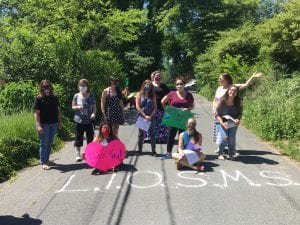
Although it seems that everywhere one looks now there are masks, early on they were hard to find. That’s why Port Jefferson resident, one who would later become village trustee, Rebecca Kassay, started up a volunteer group that delivered over 40,000 PPE and comfort-care items to essential workers.
Long Island Open Source Medical Supplies-Nassau and Suffolk County is celebrated for creating a Facebook group of hundreds of volunteers across the Island who gathered, purchased, created, donated and delivered PPE for frontline workers.
“From mid-June through September, we continued to accept donations of PPE from makers, as well as connecting volunteers who want to continue making them to community groups that will get PPE to low-income families and students in school districts, individuals in shelters, Indigenous populations and other at-risk groups,” Kassay said.
More than 300 seamstresses, crafters and makers made and donated more than 15,000 face masks, 2,800 caps, 5,000 face shields, 12,000 ear savers and over 10,000 comfort-care items. Their fleet of 68 volunteer drivers worked hard to deliver the homemade PPE to over 130 facilities and collaborated with other volunteer groups by donating and exchanging fabric and materials.
It started when Kassay, with other local volunteers, began to see the demand for PPE and the need for help in hospitals. Her home, The Fox and Owl Inn in Port Jeff, became “the hub” that got things going. She and her fellow volunteers created a group that allowed people to communicate with one another with extraordinary teamwork.
“After about a week it was growing so fast,” she said. “It ended up with 10 administrators managing a couple of hundred volunteers, selling masks, driving around materials, donating 3D-printed face shields, communicating with hospitals. The effort was to make everything much more efficient.”
But she said she truly couldn’t have done it alone.
“Eleni Stamatinos was the mask coordinator and also helped train and coordinate with the other administrators,” Kassay said, adding that Stamatinos would work alongside her for 10-14 hours a day. “She has grown to be a dear friend of mine. While there has been immense tragedy during the pandemic, we have found beauty in the connections that might not have happened otherwise.”
And then there were volunteers she worked with, who spent hours helping out.
“There are also countless Port Jefferson and surrounding area residents who contributed more time, heart and materials than I could’ve ever hoped for,” Kassay said. “We were driven by the satisfaction of bringing comfort to others. Other opportunities and priorities were pushed aside because of the urgency we all felt in the moment, and none of us regret it.”
While masks and other PPE were needed for frontline workers and the rest of the community, other volunteers dedicated their time at home to feed those who are struggling with food insecurity.
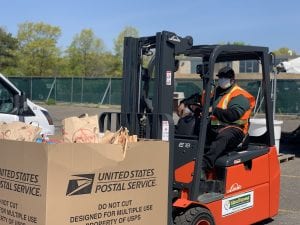
Nicole Garguilo, public information officer with the Town of Smithtown, said Fairfield at St. James, a senior living community, stepped up to help.
“They knew that they were high risk for the virus, but still wanted to help,” she said. “So, every month they’d get in a car caravan together, loaded up with nonperishables and meet us at the Gyrodyne parking lot.”
The town then delivered the food to Island Harvest of Hauppauge on their behalf.
“It was really something to see our seniors put helping others in need before their own safety,” Garguilo said.
Carol Walsh, an 82-year-old resident at the community, was just one of the dozens of seniors who wanted to help.
“I know there are so many people who are hungry,” she said. “The feeling of isolation is so overwhelming, and people forget that others are out there who want to care and make people feel better. If we can make people smile and provide food it’s worth it.”
Walsh said their food caravans would often have between six and eight cars full of food. In September and October, they donated their collection to Island Harvest, but this month they brought more goods to the Smithtown Emergency Food Pantry.
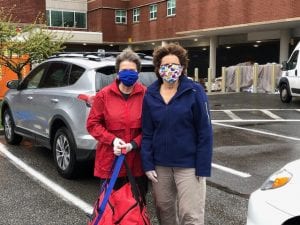
And while these seniors collected nonperishables, the local chapter of Meals on Wheels brought hot and cold meals to those who were unable to leave their homes.
Barbara Siegel said the Three Village Meals on Wheels group consists of about 150 volunteers and has been delivering food to those in need five days a week for 38 years.
Partnering with the kitchens at Port Jefferson’s Mather and St. Charles hospitals and Setauket Village Diner, a cold lunch and a hot dinner are delivered to people who are homebound. Siegel said that other chapters of Meals on Wheels had to temporarily shut down during the pandemic but not the Stony Brook operation, which covers from St. James, across the North Shore into Mount Sinai, down into Coram and toward Lake Grove.
“We got more calls during pandemic,” Siegel said.
And although Siegel thanks and appreciates all the volunteers who gave up their free time to drive around Suffolk County delivering these dishes, she said it wouldn’t have been possible without the office staff coordinating it all: Ruth Spear, Ronnie Kreitzer and Linda Bernstein.
Siegel said Spear is a caring individual, always cheerful when someone calls the office, willing to help them with whatever inquiry they have. Bernstein takes care of the financial side of things, while Kreitzer coordinates the driver routes.
“The three ladies that are in the office are just invaluable — they never stop,” Siegel said. “They go to sleep at night and their heads are still going thinking about tomorrow. They do it from their heart and soul.”
But Spear was modest, saying it was a collaborative team effort.
“It’s just our job,” she said.
Kathleen Weinberger, Aramark Nutrition Services food service director with Kings Park school district, helped feed hundreds of students throughout the pandemic.
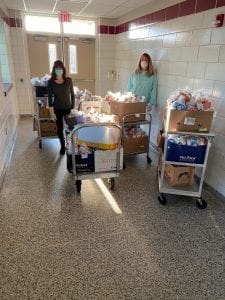
Weinberger said that at the start of the pandemic, she reacted and considered what the safest way to help families would be during the crisis. Aramark employees worked alongside the school district to incorporate a breakfast and lunch grab-and-go window at the high school. They also incorporated a Meals on Wheels bus delivery system with district bus drivers to those families who had no means of transportation.
From March 16 until June 30, they distributed 28,406 meals, seven days a week.
“There were many special moments from seeing their smiles on their faces and the wonderful handwritten ‘thank you’ notes and pictures drawn by the kids that really warmed my heart,” Weinberger said.
The Kings Park resident said it’s important to consider others, not just during a crisis but every day.
“People should gather together in good times, as well as difficult times, as it makes stronger ties within the community,” she said. “I’m willing to do whatever I can to lend a helping hand.”

